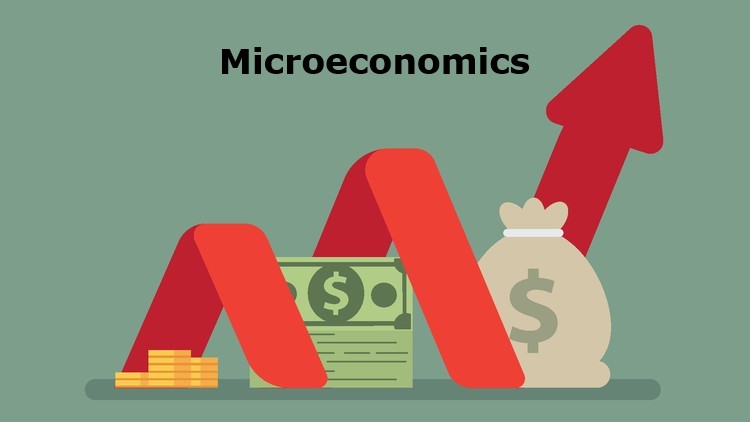Understanding microeconomics for managers is essential for anyone responsible for making strategic business decisions. Microeconomics is the study of individual markets and the behavior of consumers and firms within those markets. For managers, mastering microeconomic principles is key to understanding market dynamics, pricing strategies, consumer behavior, and resource allocation. These insights can empower managers to optimize production, make data-driven pricing decisions, and improve overall business efficiency.
Whether dealing with supply and demand, pricing strategies, or market competition, a solid grasp of microeconomics allows managers to anticipate market trends and respond effectively. This knowledge equips managers with the tools they need to understand how individual economic actors—such as consumers, firms, and competitors—make decisions, enabling them to craft strategies that align with both market forces and business goals.
The Role of Microeconomics in Business Decision-Making
At its core, microeconomics for managers revolves around understanding how markets operate and how consumers and firms interact within those markets. Managers must grasp key concepts such as supply and demand, elasticity, market equilibrium, and marginal analysis. These principles help managers anticipate changes in consumer behavior, forecast market trends, and understand how competitors might react to different strategies. A solid understanding of these economic fundamentals is critical for making informed decisions.
Supply and demand form the foundation of microeconomics. Supply refers to the quantity of a product or service that a firm is willing to produce at various price points, while demand reflects how much consumers are willing to purchase at those same prices. Managers need to identify shifts in supply and demand, as these shifts can significantly impact pricing, production decisions, and inventory management. A sudden shortage in supply or a surge in demand can present both risks and opportunities, depending on how effectively a manager responds.
Price elasticity is another essential concept in microeconomics for managers. Price elasticity measures how sensitive consumers are to changes in price. For example, a product with high elasticity will see significant changes in demand when its price changes, while a product with low elasticity will experience less fluctuation. Managers who understand price elasticity can make more informed pricing decisions, balancing profitability with market demand. In addition, elasticity helps managers anticipate how competitors might respond to price changes, enabling more strategic pricing.
Understanding Market Structures
Microeconomics for managers requires a deep understanding of the different market structures in which businesses operate. Market structures describe the competitive environment in which firms interact. These structures include perfect competition, monopolistic competition, oligopoly, and monopoly, each of which has distinct characteristics that affect a firm’s pricing power, product differentiation, and entry barriers.
In perfect competition, many firms sell identical products, and no single firm has significant market power. Prices are determined by market forces, and firms must focus on efficiency to remain profitable. In contrast, monopolistic competition allows for product differentiation, giving firms more control over pricing. Oligopolies, where a few large firms dominate the market, require careful strategic planning, as the actions of one firm directly impact the others. Finally, monopolies grant a firm full control over pricing due to the absence of competition.
Managers must recognize which market structure their business operates within to craft effective strategies. In highly competitive markets, businesses may focus on differentiating their products or services to stand out. In monopolistic markets, firms can take advantage of greater pricing power but may also face regulatory scrutiny. Understanding the dynamics of market structures enables managers to navigate competitive challenges and capitalize on opportunities.
The Importance of Costs and Production Efficiency
Another key component of microeconomics for managers is understanding costs and production efficiency. Managers must be able to distinguish between fixed and variable costs when making decisions about pricing, budgeting, and expansion. Fixed costs, such as rent or salaries, remain constant regardless of production levels, while variable costs, such as raw materials, fluctuate with production volume. Understanding the relationship between these costs is essential for effective resource allocation.
Marginal cost, or the cost of producing one additional unit of a product, is a crucial concept in microeconomics. Managers can use marginal cost analysis to determine the optimal production level by comparing marginal cost to marginal revenue. If the marginal revenue (the additional revenue gained from selling one more unit) exceeds the marginal cost, the firm should continue producing. Conversely, if the marginal cost exceeds the marginal revenue, it may be time to scale back production. This approach helps managers maximize profits while avoiding overproduction or resource wastage.
Efficiency is another critical element in microeconomics for managers. Firms that can produce goods or services at a lower cost than their competitors gain a significant advantage in the marketplace. Managers must continually seek ways to improve efficiency, whether through technology, process optimization, or better resource management. Efficient production not only reduces costs but also enables firms to offer competitive pricing without sacrificing profitability.
Consumer Behavior and Market Demand
Consumer behavior is a central aspect of microeconomics for managers, as it directly influences market demand. Managers who understand how consumers make purchasing decisions can tailor their products and marketing strategies to better meet customer needs. Factors such as price sensitivity, preferences, income levels, and perceived value all play a role in shaping consumer behavior. By analyzing these factors, managers can more effectively position their products in the marketplace.
Behavioral economics, a field within microeconomics, provides valuable insights into consumer decision-making processes. Traditional economic theory assumes that consumers make rational choices based on available information. However, behavioral economics recognizes that consumers are often influenced by cognitive biases and emotions. For example, the “anchoring effect” occurs when consumers rely too heavily on the first piece of information they receive (such as an initial price), leading them to make irrational purchasing decisions. Managers who understand these psychological factors can design pricing strategies and marketing campaigns that resonate with their target audience.
Pricing Strategies and Market Power
Pricing strategies are another essential component of microeconomics for managers. Managers must find the right balance between covering costs, maximizing profits, and remaining competitive. Several factors influence pricing decisions, including production costs, market demand, competitor pricing, and consumer behavior. In some cases, firms may choose to implement price discrimination, charging different consumer groups different prices based on their willingness to pay. For example, movie theaters often charge lower prices for students and seniors, while charging full price for other customers.
Price discrimination can be an effective strategy when applied correctly, but it requires a thorough understanding of market demand and consumer behavior. Managers must carefully analyze their target market to determine whether price discrimination is appropriate and how it will impact overall profitability. In addition, they must consider the competitive landscape and whether competitors are likely to respond with price adjustments of their own.
Externalities and Market Failures
Microeconomics for managers also involves understanding externalities and market failures. Externalities occur when a business decision impacts third parties who are not directly involved in the transaction. For example, pollution from a factory affects the surrounding community, even though the community is not a part of the business transaction. Negative externalities like pollution can lead to market failures if not properly addressed.
Managers must be aware of externalities and take steps to mitigate their impact. Regulatory bodies often intervene to correct market failures by imposing taxes, fines, or restrictions on businesses that produce negative externalities. However, firms can also take proactive measures by adopting sustainable practices, engaging in corporate social responsibility initiatives, and reducing their environmental footprint. By addressing externalities, businesses can avoid regulatory penalties while enhancing their reputation and contributing to long-term sustainability.
The Role of Game Theory in Strategic Decision-Making
Game theory, a branch of microeconomics, helps managers analyze strategic decision-making in competitive situations. It examines how individuals or firms behave when outcomes depend on the actions of all parties involved. Managers use game theory to predict how competitors, suppliers, or customers will respond to strategic moves like price changes or new product launches.
In oligopolistic markets, where a few firms dominate, managers must anticipate competitors’ reactions to pricing or marketing decisions. For example, if one firm lowers its prices, competitors may follow, leading to price wars that reduce profitability. Game theory allows managers to craft strategies that minimize risk and maximize opportunities for collaboration or mutual benefit.
Mastering microeconomics is crucial for making informed business decisions. Understanding supply and demand, optimizing pricing, and analyzing competition equip managers to navigate complex business environments. Applying microeconomic principles helps managers optimize production, anticipate market changes, and develop strategies that drive profitability and long-term success.
A strong grasp of microeconomics enables managers to make data-driven decisions, improve efficiency, and respond to external market forces. As competition intensifies and markets evolve, the ability to apply microeconomic insights becomes increasingly valuable.


